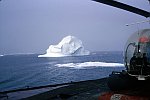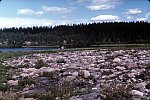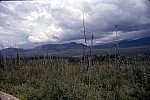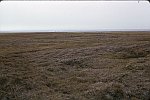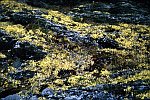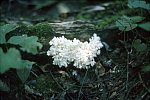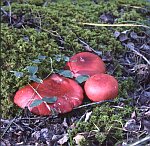The Plants and Animals of Northern Canada
Author: Jennifer Hamel Page 1 | Page 2 | Page 3
Think about the words arctic and north. What pictures come into your head? Do you think about ice and snow or trees and flowers? About polar bears and walruses or rabbits and ducks? You are right if you picked…ANY of these!! Even though it’s very cold for much of the year, making icebergs like the one pictured here and causing blizzards, northern Canada is home to many different types of flora (plants) and fauna (animals) – even rock gardens in the Northwest Territories, like this one near the capital city of Yellowknife, are home to countless plants and animals.
Muskeg and Tundra
Here are some of the different types of fauna and flora that you can find in Canada’s north. Let’s start our exploration by looking at some of the different types of environments that you would find in the arctic.
Muskeg is a type of bog, or wet environment, found in northern regions of the world. Muskeg was originally an Algonquin term which means "grassy bog". Muskeg is made out of dead plants that have been decomposed, or broken down, by different types of bacteria and fungi. Muskeg also contains moss called sphagnum (SFAG-num), which can absorb up to thirty times its weight in water, as well as wet, sloppy mud that forms the foundation of the bog. Canada has more muskeg than any other country in the world. Canadian muskeg is about 10 000 years old and was covered by glaciers during the last ice age. Many different kinds of plants grow in muskeg, including moss and black spruce (tamarack) trees.
As you travel further north, the environment changes from muskeg to tundra. Tundra is the name given to much of the land in the Canadian north. There are long cold winters on the tundra and short cool summers. Underneath the tundra is permafrost, or permanently frozen ground, which prevents deep roots from growing. That is why there are no trees on the tundra.
Even though the tundra has no trees, many other types of plants do grow on the tundra. For example, there are shrubs, grass, lichens and mosses. These are small plants which do not have deep roots.
Many animals live on the tundra, including caribou, muskoxen, and polar bears. Many species of bird also nest on the tundra.
Simple Plants
Lichens (pronounced LI-ken), fungi (FUN-guy), and moss are simple plants without roots that grow all over the arctic and provide an important source of food and energy for other wildlife.
Lichens are quite small. They attach themselves directly to the rock, so they can grow where there is no soil. Lichens can grow in extremely cold climates, so they survive easily in the freezing Arctic weather. There are over 900 different species of lichens in the Arctic.
Fungi are simple plants that have no roots, shoots, stems, or leaves. You’ve probably eaten at least one type of fungus that grows in the arctic – mushrooms! Fungi create energy by releasing special chemicals, called enzymes (rhymes with “ten times”), that break down organic matter. Fungi play an important role in northern ecosystems because they do important jobs, such as decomposing dead organic matter. Although these are important plants, scientists have completed only a few scientific studies of arctic fungi.
Mosses are small plants that grow in large clusters that often look like carpets. Because they have no roots, mosses can grow on bare surfaces like rock faces. There are over 500 species of mosses in the arctic. They usually grow where there is a source of water, such as in the streams that form when the snow melts. In fact, there is so much moss in the arctic that much of the soil in arctic regions, like muskeg, is made out of decaying moss.
